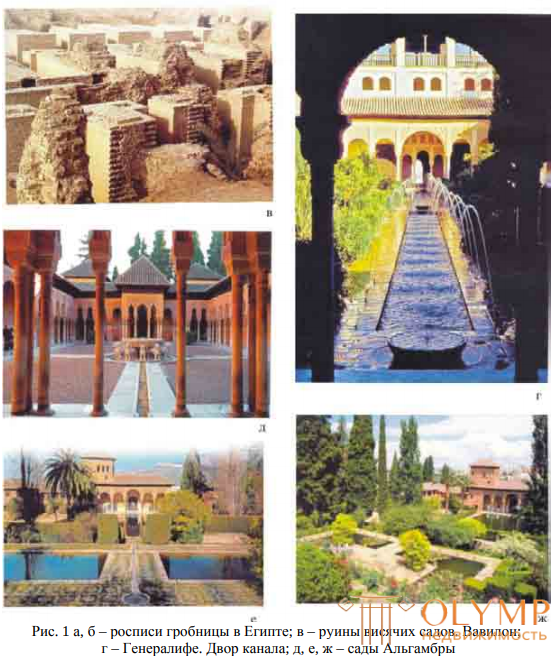
The states of the Second Anniversary were located in the valley of the Tigris and Euphrates rivers, which flow into the Persian Gulf. The development of the interfluve proceeded from the south, where the climate is similar to the Egyptian one, to the north, from the fertile loess lands towards the semi-desert mountain regions with a cooler climate. So, to the north of Babylon in the winter there were cold rains, and further north - snow. In some places in these areas grew forests.
The internecine devastating wars did not contribute to the preservation of cultural monuments of the States of Dvorichchia. However, in short periods of calm, when states united under the rule of one of them, cities, palaces, temples were built, and gardens were created. In the colorful history of the Two-Rounds, the heyday of the states of Assyria and Babylonia, referred to as Assyro-Babylonian culture (VIII – VII centuries BC), stands out.
The main building material was a raw brick - the material is extremely fragile, which also caused the rapid disappearance of architectural monuments.
The cities of Mesopotamia had a rounded shape in the plan, later a rectangular shape and were surrounded by a ring of fortress walls, sometimes double or triple. On the occupied area of the city were less than in Egypt, building up denser. In architectural complexes, the development of the composition did not take place along the longitudinal axis; transverse deployment of the space was applied. Also characteristic is the construction on the terraces, more precisely, on artificial bulk platforms, towering above the surface of the streets. According to this principle, temples-ziggurats were constructed in the form of stepped towers, representing a series of descending, as if placed one on another platform, square or rectangular in plan. The upper platform was completed with an architectural structure, the temple itself. The protruding parts of the lower platforms were sometimes planted with trees: around the perimeter they planted plants in specially arranged pits filled with vegetable earth. “Hanging Gardens” of Semiramis (App., Fig. A 4, 5), created in the courtyard of the Southern Palace (605–562 BC), which were expanded and renewed by Nebuchadnezzar II, were particularly famous. On the basis of archaeological materials, scientists presented hypothetical versions of the gardens of Semiramis (Appendix, Fig. B 1, c).
According to these data, the gardens (more precisely, the garden) were a series of towering terraces - hence, probably, the plural number of “gardens”, adopted in ancient descriptions (Appendix, fig. A 5).
The garden adjoined the northeast corner of the city walls, and its southern part went out to the palace chambers. It was arranged in the form of four-step, tapering terraces. The lower one measuring 45 × 40 m had a height of 8 m, the second - 40 × 30 × 13 m, the dimensions of the two other terraces are unknown. This garden building reached the level of the city wall. The layer of land on the first two terraces was 2 m, on the following - 1 m. Trees grew on the lower terraces, and shrubs and flowers on the upper terraces. The terraces were supported by massive pillars on which lead slabs were laid, then a layer of reed impregnated with bitumen, and finally a double layer of bricks. Under the arches located royal chambers.
All terraces were connected by ladders located along the axis of the garden.
From the top platform views of the city and the valley of the Euphrates.
This garden was significantly different from the Egyptian flat closed garden. Nevertheless, the presence of artificial terraces, their axial construction and the organic inclusion of the garden in the regular grid of the city plan allow us to refer it to the number of regular ones.
The idea of creating gardens on terraces, or "hanging gardens", proved to be quite fruitful and found its development in the gardens of Persia, Italy, and later on in Russia (the "high" gardens of the Moscow Kremlin, end of the 17th century). This method of gardening in modified forms has come to our days in the form of roof gardens.
In addition to the considered small garden, there is also scant information about the vast park created by Assyrian king Sargon II in the VIII c. BC e. near the city of Khorsabad, in which trees grown from other countries grew: cypress trees, cedars, plane trees, willows, poplars, laurel, boxwood, fruit trees. There is also information about the extensive parks, or forests, intended mainly for hunting and horseback riding. These arrays are considered prototypes of modern forest parks.
Что бы оставить комментарий войдите
Комментарии (0)